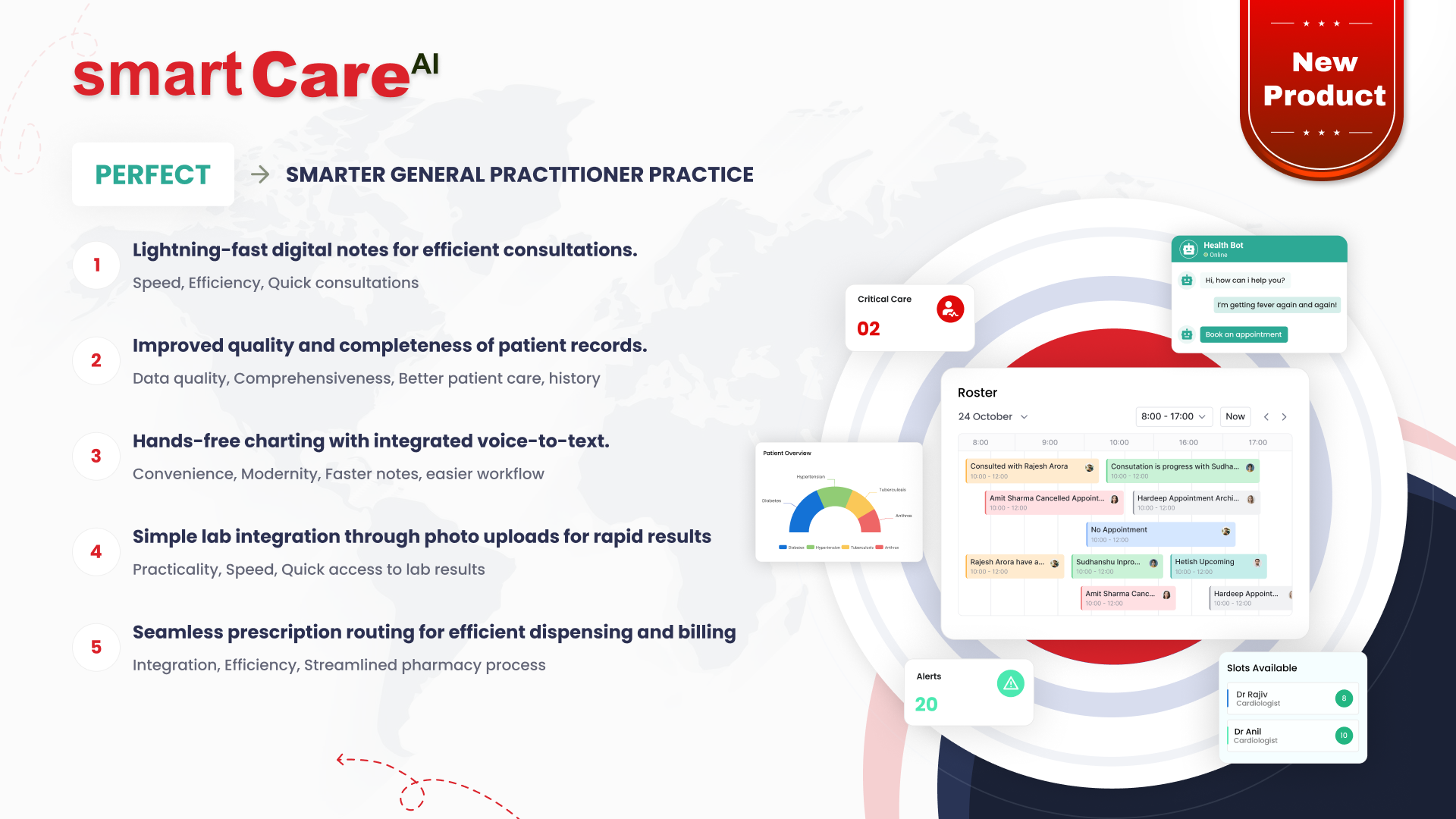
Posted On August 5, 2025
Top Trends Shaping Healthcare Software Development in 2025
As we move further into 2025, the healthcare industry continues to evolve with the support of advanced technology. Healthcare software development is playing a crucial role in improving patient care, enhancing operational efficiency, and adapting to changing global needs. Here are five top trends that are shaping the future of healthcare software this year.
AI and Machine Learning Are Getting Smarter in Healthcare
Artificial Intelligence (AI) and Machine Learning (ML) are becoming increasingly powerful tools in healthcare. These technologies are enabling faster diagnoses, more accurate predictions, and smarter treatment planning. In 2025, AI is being used to analyse patient data, detect patterns, and assist clinicians in making informed decisions. Machine learning models continue to evolve with access to larger datasets, improving their ability to support real-time decision-making and personalise care plans for patients.
Telehealth Is Becoming the New Normal
Telehealth adoption soared during the pandemic, and it remains a central part of healthcare delivery in 2025. Software platforms that support virtual consultations, remote monitoring, and digital prescriptions are now standard offerings. Telehealth not only improves access to care, especially in remote areas, but also reduces hospital visits and waiting times. Healthcare providers are investing in secure, user-friendly telehealth solutions that integrate seamlessly with other systems to ensure continuity of care.
Why Personalised Healthcare Software Is on the Rise
Patients today expect care that is tailored to their individual needs. Personalised healthcare software uses data such as medical history, genetic profiles, and lifestyle choices to design custom care plans. These solutions help improve patient engagement and outcomes by addressing specific health concerns more precisely. In 2025, developers are focusing on creating flexible, patient-centred applications that adapt to the user and provide real-time insights for both patients and care teams.
Cloud-Based Systems Are Powering Scalable Growth
Cloud computing continues to offer major advantages for healthcare software development. Cloud-based systems provide scalability, cost-effectiveness, and remote access to data. With growing data volumes and an increasing need for system interoperability, cloud platforms allow healthcare providers to securely store, access, and share patient data in real time. In 2025, healthcare organisations are relying on cloud infrastructure to support innovation, manage compliance, and improve the overall patient experience.
Cybersecurity Is a Top Priority for Healthcare Apps
As digital healthcare expands, so do concerns about data privacy and security. Cybersecurity has become a critical focus in 2025, with developers prioritising secure software architectures and regulatory compliance. Healthcare apps are incorporating multi-factor authentication, encryption, and secure APIs to safeguard sensitive patient information. With cyber threats constantly evolving, healthcare providers are actively working to ensure that their systems remain protected against breaches.
Wearable Integration Is Driving Real-Time Monitoring
Wearable technology is no longer just about fitness tracking. In 2025, it is becoming a vital part of healthcare delivery. Custom healthcare software is increasingly being built to integrate with wearable devices that monitor heart rate, oxygen levels, sleep patterns, and more. This allows healthcare professionals to receive real-time data from patients, enabling proactive care and early intervention.
Software that connects seamlessly with wearables is improving chronic disease management, post-operative care, and long-term monitoring. This trend supports a more patient-centred model where individuals are actively engaged in tracking their own health metrics.
Interoperability Is Key to Connected Patient Care
As healthcare ecosystems become more complex, interoperability is essential. In 2025, healthcare software is being developed with a greater focus on seamless data exchange between different platforms and systems. Hospitals, clinics, labs, and pharmacies must be able to share patient information without delays or errors.
Interoperable software reduces redundant testing, improves diagnostic accuracy, and streamlines treatment plans. It ensures that every healthcare provider has access to a patient’s complete and updated medical history, enabling better coordination and continuity of care.
Data Analytics Is Helping Providers Make Smarter Decisions
Healthcare providers are increasingly relying on data to inform their decisions. In 2025, software development is focusing on advanced analytics capabilities that help providers gain insights into patient outcomes, resource utilisation, and operational performance.
Data-driven healthcare systems can identify trends, predict risks, and guide personalised treatment plans. Analytics tools embedded into healthcare software enable providers to act quickly, improve patient outcomes, and reduce costs. It also supports evidence-based decision-making across the organisation.
Low-Code and No-Code Platforms Speed Up Development
Speed and flexibility are vital in modern healthcare. Low-code and no-code platforms are gaining popularity as they allow for faster software development with minimal manual coding. These platforms empower non-technical users, such as healthcare administrators, to build and customise applications quickly.
In 2025, many healthcare organisations are adopting these platforms to prototype new solutions, automate workflows, and address specific departmental needs. This trend is lowering development costs and reducing the time it takes to bring new solutions to market.
Compliance and Regulations Are Evolving with Technology
The regulatory landscape is evolving alongside healthcare technology. In 2025, compliance is no longer an afterthought but an integral part of software development. Developers are now embedding features that support HIPAA, GDPR, and local data protection laws directly into healthcare applications.
Proactive compliance reduces the risk of penalties and enhances trust among users. Secure login systems, encrypted data transfers, and detailed audit trails are becoming standard features. Keeping up with changing regulations ensures that healthcare software remains safe, legal, and effective.
Conclusion
The year 2025 marks a turning point in healthcare software development, driven by innovation, patient expectations, and the need for more connected and efficient care systems. From AI-powered tools to robust cybersecurity measures, these trends are reshaping the way healthcare is delivered and managed.
For organisations looking to stay ahead in this dynamic landscape, staying informed and adopting the right technologies is essential.
To learn more about future-ready healthcare solutions, visit smartdatainc.com.
